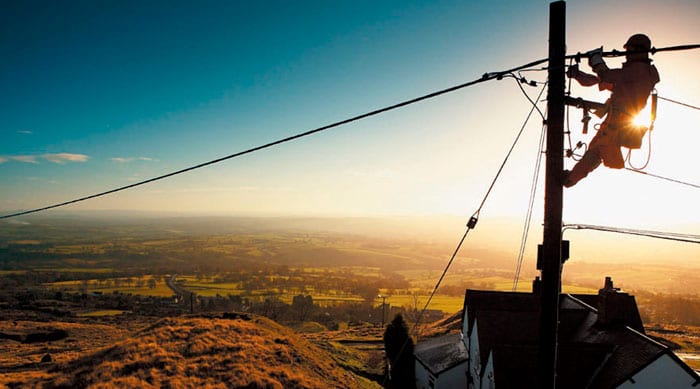Preparing for the worst – falls from heights
If all prevention measures for protecting network employees from the risks of work at height should fail, how strong are policies for response? Steve Ringshaw says the matter needs close attention.
16th May 2016 by Networks

More than a million businesses and ten million workers are estimated to carry out jobs at height every year. The HSE sets out guidelines and useable advice to ensure businesses and employees are clear on what the law requires. Despite this, falls remain a cause of serious workplace injuries and something that can’t be ignored when it comes to protecting employees.
With work at height often unavoidable, it’s important to assess and implement a set of good practices that minimise the risk. These range from ensuring employees are wearing the correct footwear, accounting for wind speeds when on an elevated platform, to regularly inspecting scaffold towers. Although there are the overseeing guidelines set out by the HSE, most organisations choose to enhance these with their own safety precautions such as specific kit inspection or buddy systems.
Of course, the first step in any safety process is preventative action, but, if an accident does occur, companies also need to have a quick and efficient emergency response in place. In many organisations, employees that frequently work at height are required to complete a two yearly working at height and rescue course. Furthermore, even before entering a hazardous site, organisations can establish a paper trail, collecting contact details or providing the necessary emergency device that maybe required.
See Network’s recent feature on industry health and safety challenges and innovations here.
A reliable method to protect employees is the buddy system that requires any employee working at height to be accompanied by another employee. In this case if an accident did occur, the buddy would be able to call, raise an alarm, and get help swiftly. This process depends on the employees having the correct emergency contacts readily available and most importantly a guaranteed mobile signal. If this isn’t the case, an alternative solution will need to be formulated.
If employees are working at height in an isolated environment, it’s likely that they won’t have any signal to call for help on their mobile phone. This can be a problem even when working in pairs as if one was rendered unconscious or became critically ill how would the other person call for help or raise the alarm?
Organisations have a moral obligation to protect employees to the best of their ability. If an accident does occur, the safety measures don’t end there, as it’s also the amount of time it takes to raise the alarm and the response time to an incident. With the appropriate communication infrastructure in place for the specific environment employees are working in, the process can be quick and efficient, ensuring the safety of all workers and the business. Steve Ringshaw, QHSE & Project Coordination Manager at ANT Telecom
Comments
Login on register to comment
Related content

Power
The future for vegetation management
Why networks should focus on data not trees to overcome the costly challenges involved in vegetation management

Power
An unprecedented opportunity for change
Why short interruptions will matter in RIIO-ED2 and how to address them.

Power
Funding for SSEN electric vehicle scheme
Innovation initiative will bring forward portable EV charging devices
Related supplier content

Power
Load patterns and lockdown: how Covid-19 is impacting electricity networks
Insights into dynamics on the low voltage network as the outbreak unfolds

Downloads
Protect electrical equipment from insulation failure
Insulation faults are a major cause leading to the eventual failure of electrical equipment. Partial discharge (PD) is a very reliable indicator of developing insulation faults. Regular PD testing allows users to detect and analyze PD activity

Heat
How E.ON. is helping the City of London become a zero emissions city
Discover Citigen. Deep in the heart of our bustling capital